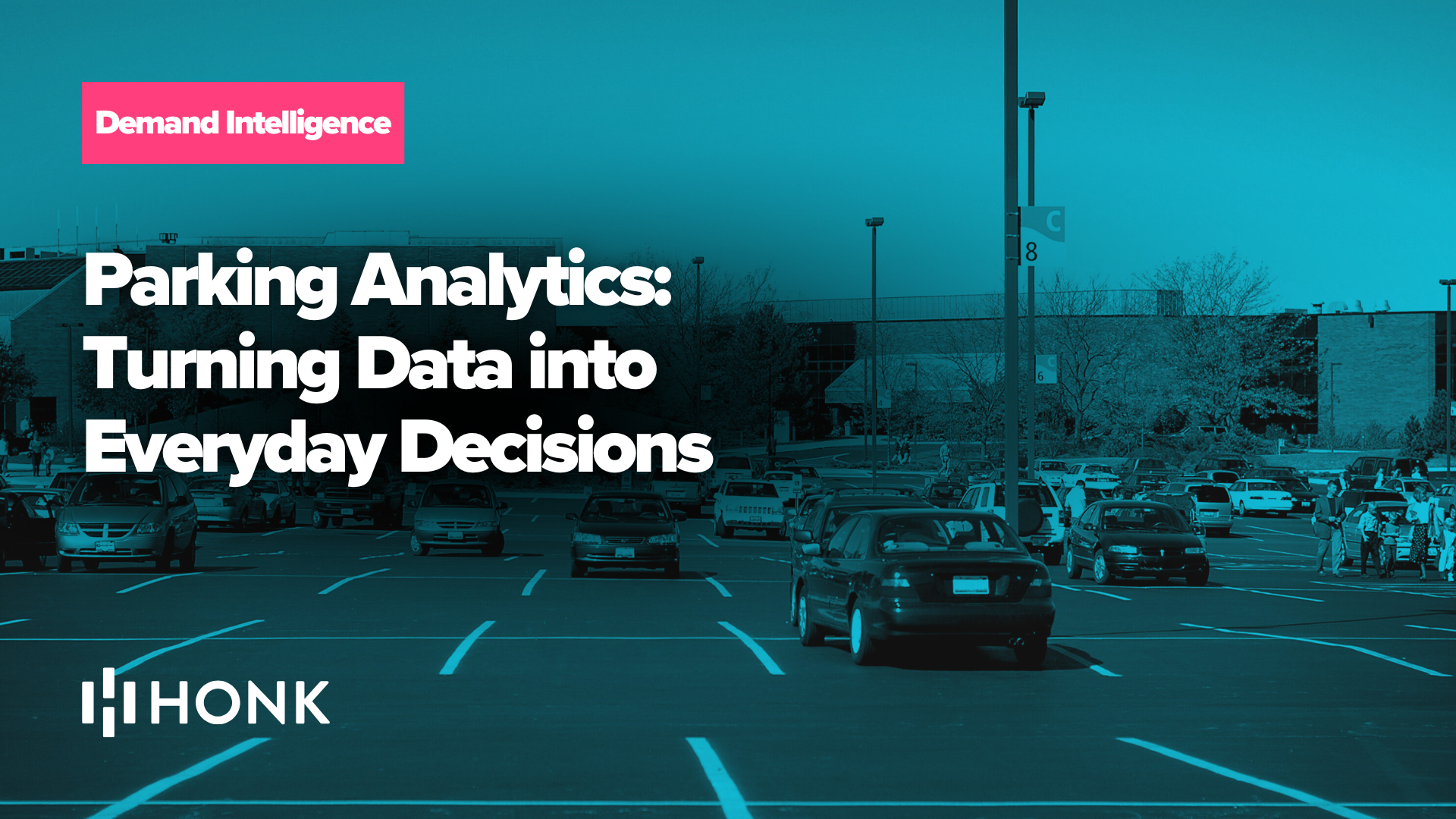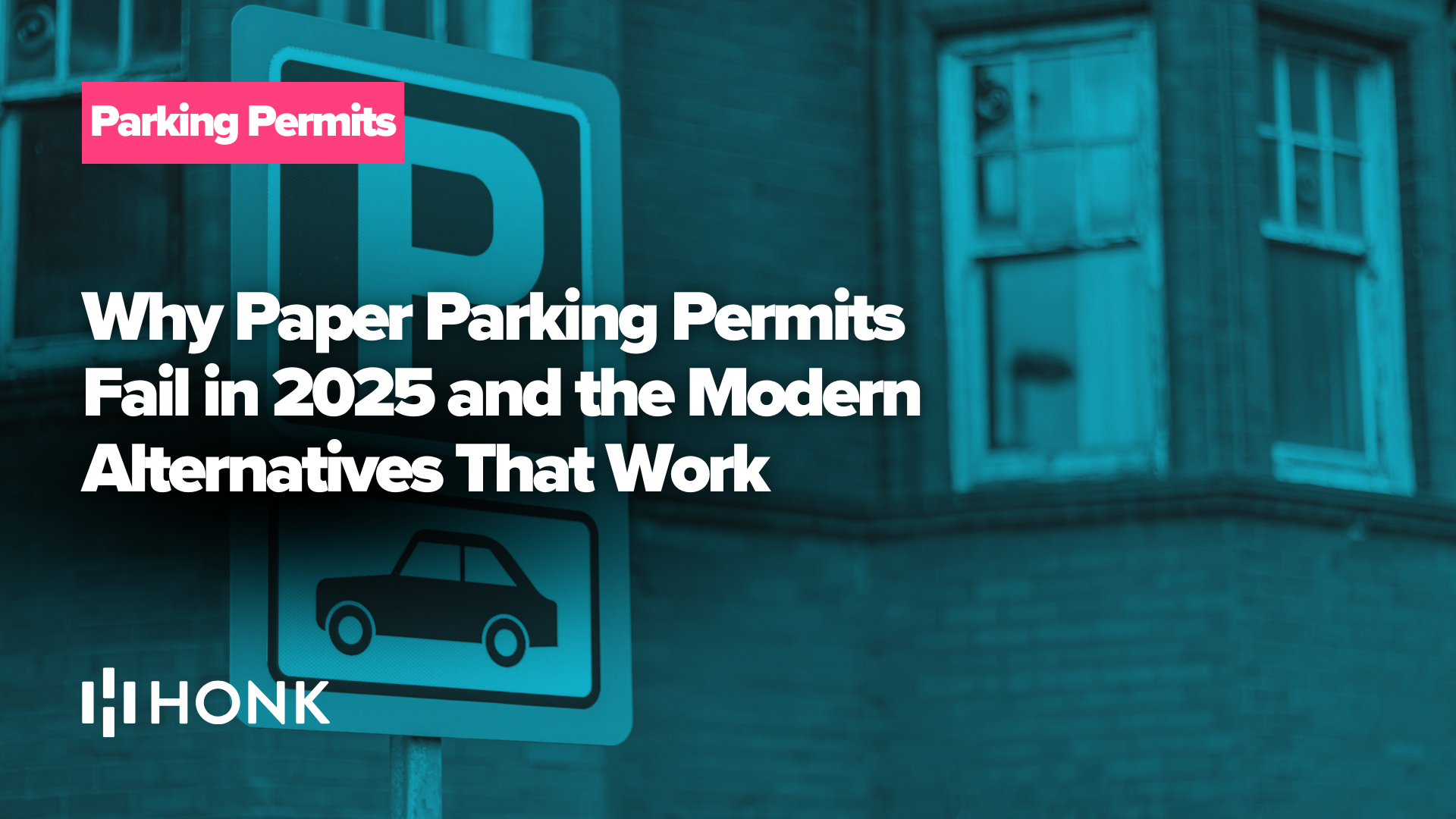Parking is often viewed as a simple necessity: cars, spaces, and transactions. But for operators, it is far more complex. Managing demand, optimizing revenue, and creating smooth experiences for drivers are ongoing challenges that demand more than guesswork. The key to solving these challenges is data.
Parking analytics transforms raw usage information into actionable insights. It gives operators the power to see trends, predict outcomes, and make smarter decisions every day. HONK has long emphasized the importance of data in shaping modern parking management, as outlined in Parking Analytics: Turning Data into Actionable Operational Insights. The difference today is how these insights are being applied in practice.
This article explores how operators are already using HONK’s analytics dashboards to improve their operations in three critical ways: adjusting pricing during peak demand, identifying underutilized lots, and planning seasonal staffing. Each example demonstrates how analytics turns parking from a static utility into a dynamic system that benefits both operators and drivers.
Adjusting Pricing During Peak Demand
One of the most immediate and impactful uses of parking analytics is pricing optimization. In many parking systems, rates are set once a year, or even less frequently, and remain unchanged regardless of demand fluctuations. That approach leaves money on the table during busy times and results in unused capacity when demand is low.
HONK’s analytics dashboards provide a real-time view of occupancy patterns. Operators can see exactly when demand spikes—whether it is weekday mornings in business districts, evenings near entertainment venues, or weekends in tourist-heavy areas. With this information, they can adjust pricing dynamically.
For example, slightly higher rates during peak hours help balance supply and demand by encouraging turnover. This ensures more drivers can access spaces when they need them most. Conversely, lower rates during quiet periods make underused lots more attractive and spread demand more evenly across the day.
This approach benefits everyone involved. Operators increase revenue by aligning prices with demand. Drivers enjoy more predictable availability and spend less time circling in frustration. Cities and campuses see smoother traffic flow and reduced congestion. In the bigger picture, fewer cars searching for parking means fewer emissions and a measurable sustainability gain.
HONK explored this concept in depth in Mobility Meets Monetization: Parking’s Role in the Smart City Ecosystem. By connecting analytics with pricing, operators can transform parking into a flexible, responsive service that works better for both people and the planet.
Identifying Underutilized Lots
Not every parking facility is used equally. Some garages fill to capacity early in the day, while others remain half empty, even during peak times. Without analytics, these imbalances often go unnoticed. Operators may continue to maintain and staff underutilized lots without realizing they are missing opportunities to redistribute demand.
HONK’s dashboards reveal usage patterns across entire portfolios. Operators can quickly identify which locations are consistently oversubscribed and which are underperforming. Once these patterns are clear, they can take steps to address the imbalance.
Marketing and digital wayfinding can redirect drivers to quieter lots, ensuring better use of available capacity. Pricing adjustments can make less busy facilities more appealing. In some cases, analytics may even highlight opportunities to repurpose underused assets, turning idle spaces into valuable resources.
This kind of insight also improves resource allocation. Enforcement officers, maintenance crews, and investments can be focused on the busiest facilities, while quieter lots receive appropriate attention without wasted effort. For municipalities, that means tax dollars are better spent. For private operators, it translates directly into higher profitability.
Event-driven operations are a clear example. In Solving Parking Challenges at Sports Complexes with HONK’s Flexible Solutions, HONK demonstrated how analytics can balance demand across multiple lots during high-volume events. By identifying which lots tend to overflow and which sit underused, operators can direct traffic strategically, improving both revenue and the fan experience.
Planning Seasonal Staffing
Parking demand changes dramatically with the calendar. University campuses face surges during the academic year and lulls during summer breaks. Tourist towns swell with visitors in peak season but quiet down in winter. Retail centers experience intense demand around holidays. Sports venues see huge spikes on game days and downtime between seasons.
Without data, planning for these fluctuations is guesswork. Operators may overstaff during quiet periods, wasting money, or understaff during surges, frustrating drivers.
HONK’s analytics make it possible to plan with precision. By examining historical usage patterns, operators can forecast when demand will rise and fall. This allows them to align staffing levels with actual needs. Extra personnel can be scheduled during busy periods, ensuring lots run smoothly when demand is highest. Staffing can be scaled back when demand drops, reducing labor costs without sacrificing service quality.
Analytics also help operators plan maintenance schedules. By identifying historically quiet periods, operators can time resurfacing, cleaning, or upgrades to minimize disruption. This proactive approach keeps facilities in top condition while avoiding unnecessary inconvenience for drivers.
The benefits are particularly clear in seasonal destinations. In How HONK Supports Seasonal Parking Demands at Tourist Destinations, HONK highlighted how analytics-driven staffing and planning ensure operators are prepared for the ebb and flow of tourist traffic. The result is smoother operations and better service, even in the face of dramatic seasonal swings.
Everyday Decisions with Parking Analytics
What makes analytics truly powerful is its impact on everyday decisions. Adjusting rates by a small amount to ease lunchtime congestion. Redirecting drivers to a half-empty garage nearby. Adding a staff shift before a major event. Scheduling maintenance during historically quiet weeks. Each of these actions may seem minor, but together they add up to significant improvements in efficiency, profitability, and customer experience.
Analytics also provide a new level of confidence. Instead of relying on assumptions or anecdotal evidence, operators base their decisions on real, timely data. That shift reduces risk and ensures strategies are backed by measurable insights. The result is not just better parking management—it is smarter urban management.
Parking analytics also supports broader goals. By reducing congestion and idling, it contributes to sustainability. By improving driver experience, it supports local businesses and community engagement. By optimizing operations, it strengthens financial performance. These ripple effects extend far beyond the lot or garage, shaping how communities function and grow.
The Future is Data-Driven
Parking will always present challenges, but with the right tools, those challenges can become opportunities. Data is the foundation for this transformation. As cities evolve, campuses expand, and mobility patterns shift, analytics will only become more important.
HONK is proud to provide the tools that make this future possible. By equipping operators with powerful analytics dashboards, HONK enables smarter pricing strategies, better utilization of assets, and precise staffing plans. Each of these applications improves day-to-day operations while aligning with long-term goals for efficiency, sustainability, and customer satisfaction.
Parking analytics is no longer a luxury—it is a necessity. For operators who want to stay ahead, the message is clear: the data is already available, and the tools are ready to use. The opportunity lies in how quickly those insights are put into action.
To learn more about how HONK helps operators turn data into everyday decisions, visit Parking Analytics: Turning Data into Actionable Operational Insights.





